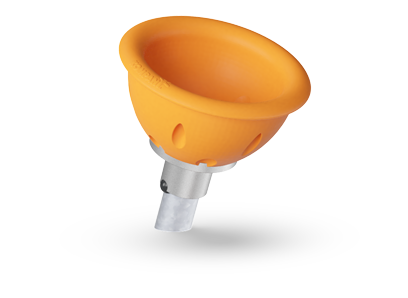
ELE400024
Spinner Bowl
- +3
4+ Years
9.8 m2
1 Users
Different playground sizes for different spaces

The dimensions of a playground aren't governed by any hard and fast rules. The size should be determined by factors like the surrounding environment and the intended users. If you're catering to a large group of children across different age brackets, a more spacious playground with ample room and diverse play equipment would be ideal. However, for a kindergarten focused on toddlers, a smaller, more compact play area could suffice.
Crafting an ideal play area requires and catering to diverse user requirements. It is crucial to comprehend the type of playground your locality demands, to determine the appropriate size for your construction. If the playground is too compact, there might not be enough variety of play activities for all, leading to overcrowding. A site that is too large might also be a misstep: appearing deserted even during peak hours, failing to engage children in interactive play - simply due to excessive space.
This guide delves into typical playground dimensions, specific equipment choices, and considerations for various settings such as schools and public parks. At KOMPAN, with over 50 years of experience in planning and installing playgrounds, we are delighted to assist and guide you through the process, ensuring you obtain the ideal playground for your community.

Compact play areas offer crucial play activities in confined spaces, such as urban environments, rooftops, or small community parks. Despite their modest size, ranging from 50 to 150 square meters, these playgrounds can still offer a diverse array of play opportunities through thoughtful design and multifunctional equipment.
Smaller playgrounds are more cost-effective, both in terms of construction and maintenance. A smaller area is easier to monitor for preschools and early learning centres. In densely populated areas and urban settings, a small playground can provide an accessible space for city children to enjoy and have fun. A smaller playground often caters to a specific age group, so if your playground needs to accommodate a broader age range, a larger playground with more play equipment may be necessary.
Examples of equipment: Compact play structures, small slides, swings, and climbing walls.
User capacity: Suitable for up to 20 children

Mid-sized playgrounds strike a harmonious balance, offering a diverse array of play activities without demanding an excessive footprint. Typically spanning an area of approximately 150 to 300 square meters, these playgrounds are a common sight in suburban neighborhoods, school grounds, and larger community parks.
Mid-sized playgrounds can accommodate a wide spectrum of equipment, fostering diverse play experiences tailored to various age groups and interests. These playgrounds can comfortably host a moderate number of children, mitigating overcrowding and ensuring ample space for each child to engage in play. The size allows for creative and flexible playground designs, incorporating distinct play zones such as climbing areas and tranquil spaces with sensory playground equipment. While more costly than small playgrounds, mid-sized playgrounds offer an optimal goldilocks zone between cost and the play value they provide.
Exemplary equipment options: Larger play structures, multiple slides, swings, merry-go-rounds, seesaws, sensory playground equipment like interactive play panels.
User capacity: Can accommodate 20-50 children.
Expansive play areas, ranging from 300 to 900 square metres or larger, offer a wealth of recreational possibilities and cater to a substantial number of users. These sizable playgrounds are commonly found in regional parks, large community hubs, and school districts with ample outdoor spaces.
Large playgrounds can accommodate a diverse array of equipment and play activities, providing extensive play experiences that cater to all age groups and interests. With the generous space available, these playgrounds can incorporate a multi-sport area or outdoor fitness equipment for older children and parents. A playground of this magnitude serves as a significant community hub, fostering social interaction among children and their families, often becoming a central gathering place for the community.
Examples of equipment to consider: Comprehensive play structures, multiple swing sets, large slides, climbing towers, and sports courts. Incorporate tranquil areas for sensory play.
User capacity: Suitable for 50+ children.

Get the overview of your playground equipment dimensions
Knowing the dimensions of specific playground equipment is crucial for designing a functional and secure play zone. By adding items to your favourites, you can view the overall required area needed for the chosen products in your . By removing or adding products to your favourites, the required area adjusts automatically, allowing you to tailor your plans and products to the available space.
Furthermore, you'll find helpful drawings and DWG files for all our products, providing you with all the specifications needed to design the ideal playground for your space requirements.
The average size of a playground varies depending on the location. Small playgrounds range from 50 to 150 square metres, medium playgrounds from 150 to 300 square metres, and large playgrounds can be 300 to 900 square metres or more.
A good general rule is to allocate 4-7 square metres per child. This ensures enough space for safe play and helps prevent overcrowding.
School Playgrounds: Typically 250 to 500 square metres.
Community Playgrounds: Usually 400 to 900 square metres or more.
Public Parks: These can vary widely, but large parks may have playgrounds of 900 square metres or more to serve a broad community.
The dimensions of a play area are pivotal for several reasons:
Financial considerations: Larger playgrounds necessitate a larger budget allocation.
Design factors: The available space influences the selection and arrangement of equipment.
Play experience: Ample space enhances the quality of play and engagement.
Community satisfaction: Addressing community needs ensures higher utilization and contentment.